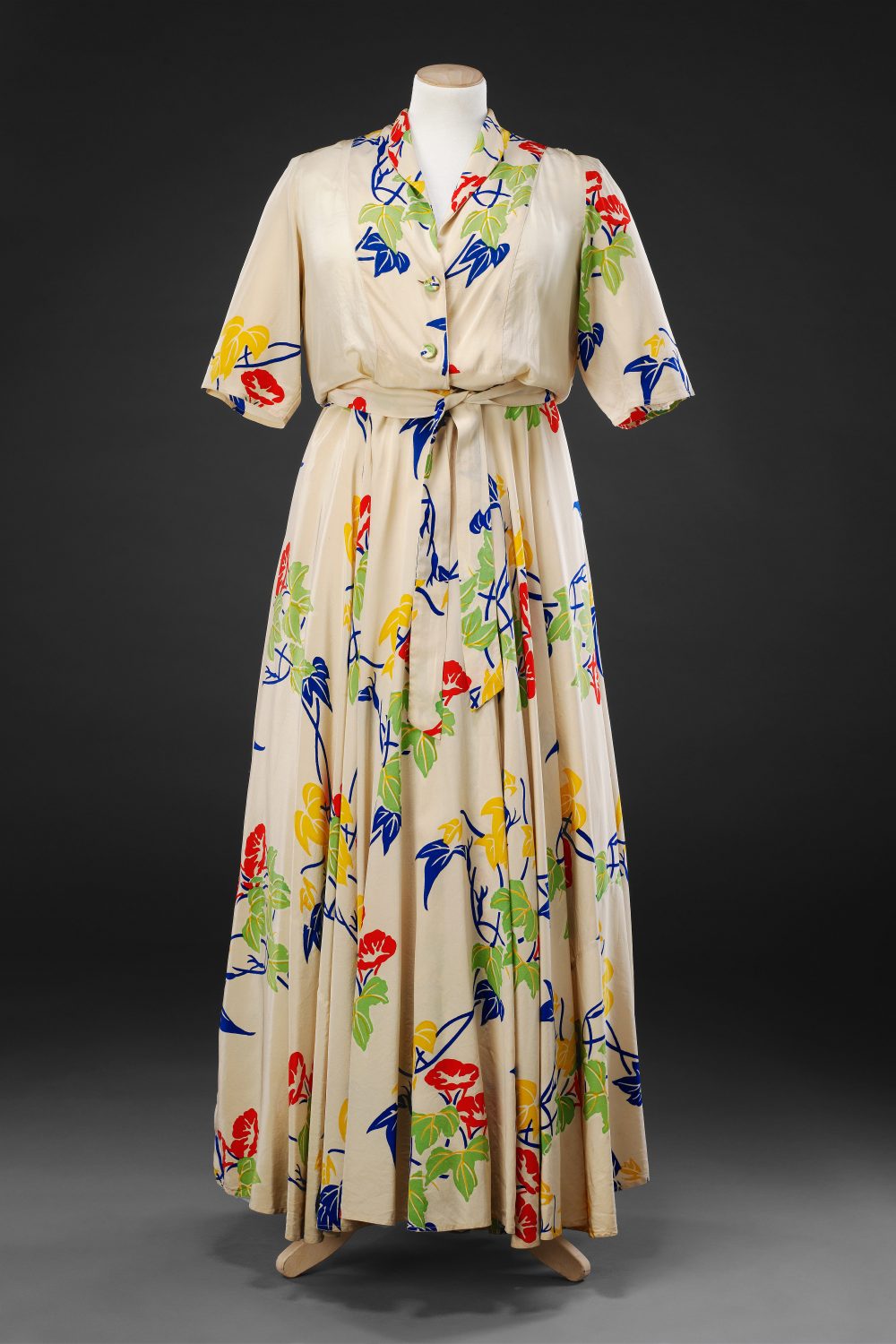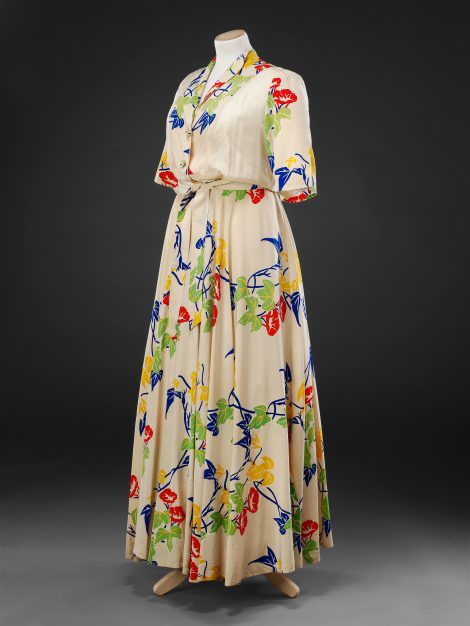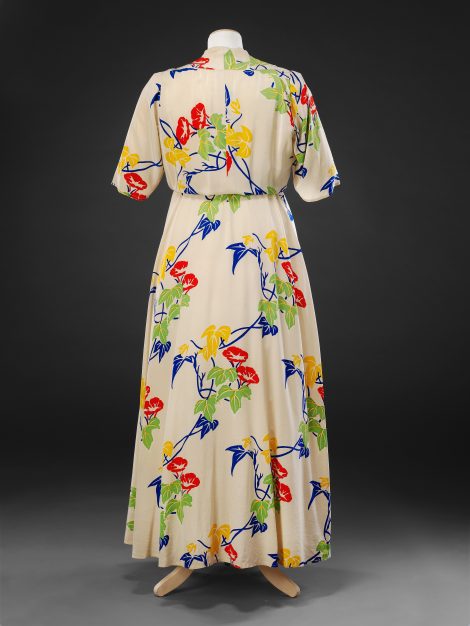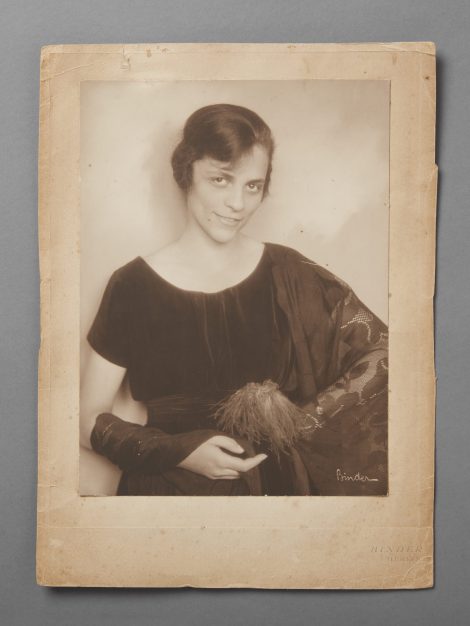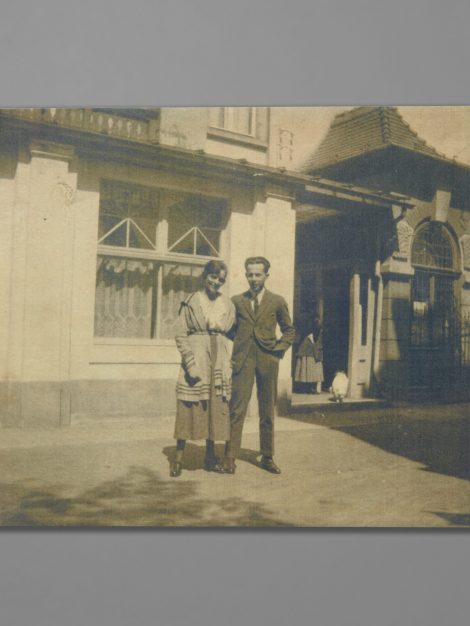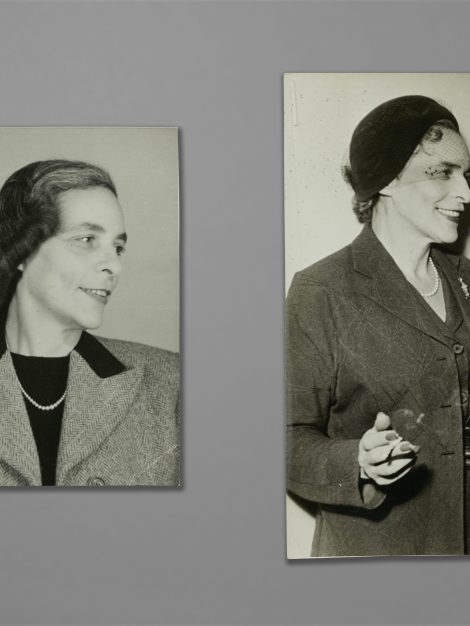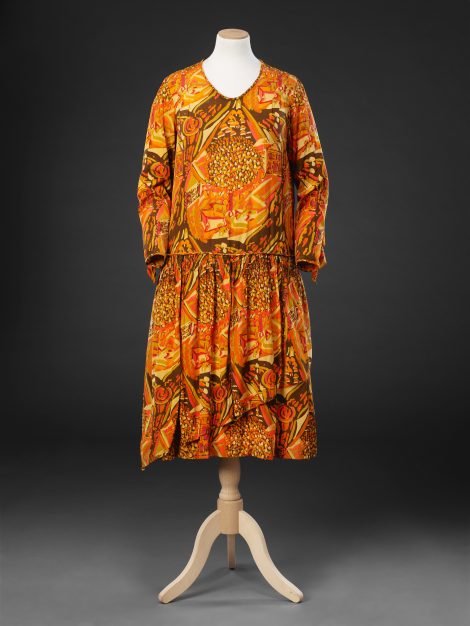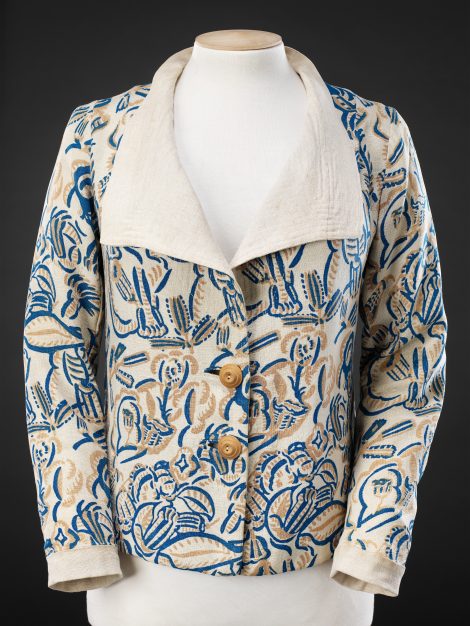Acquired from costume designer Dinah Collin
This housecoat is made of silk from the firm Cresta Silks that was founded in 1929 by Tom Heron who had previously managed the Cornish block printed textiles company Crysède. Cresta specialised in the manufacture of women’s clothes and high quality fabrics designed by notable contemporary artists including Heron’s son Patrick who was chief designer. These were sold through a chain of elegant shops in Modernist style, the architect of which was the young Wells Coates with whom Heron had worked at Crysède (see Link: https://www.ourwelwyngardencity.org.uk/content/history-of-welwyn-garden-city/where_do_you_think_we_worked/audio_recordings-2/cresta_silks).
A deeply principled man, Heron’s concerns for his business went beyond the mere appearance of the clothes he was producing. In 1930 he employed Wells Coates to design a factory and company headquarters at Welwyn Garden City where he put his ideas of modern ethical trading into practice, manufacturing goods that were, he said, ‘well-designed and well-executed, and not the rubbish which modern business, without high motive or true sense of values, is ever seeking to thrust in our way’ – an ideal that went back to those of the socialist designer William Morris.
Into this enlightened and humane environment came the owner of this housecoat, Anita Zanda, and her young son Peter, who later became a theatre designer. The pair left Berlin as refugees in 1933, and amongst those who offered them a home in Welwyn Garden City was the Heron family. Tom Heron also offered Zanda employment, and she worked for Cresta for many years, managing shops in London and Brighton. Surviving photographs reproduced in Additional Images, two taken in Germany around 1920, the others later, in the 1950s, show her to be a very elegant and well dressed woman.
Like earlier tea gowns, housecoats were smarter and more fashionable than dressing gowns, the purpose of which was to cover nightwear, and could be worn around the house and for informal entertaining. Although the silk of this example does not have the imaginative visual complexity of many Crysède designs (see Related Items) it shares the flat simplified forms of the block printing process realised in non or semi naturalistic colours. As the floral design is slightly out of register, it is likely that Anita Zanda made the housecoat from a length of substandard silk she had bought from, or was given by, the company. She appears to have had insufficient fabric as the front side panels are of plain cream silk. Cresta outsourced the printing of its textiles, and in common with other high quality manufacturers, required the return of ‘seconds’ to prevent them from being sold cheaply elsewhere.
In the early 1950s Cresta was taken over when production proved uneconomic in the post war climate and Heron’s health deteriorated. Under new ownership the character of the company changed, and the printing blocks and screens and shop interiors were destroyed.
